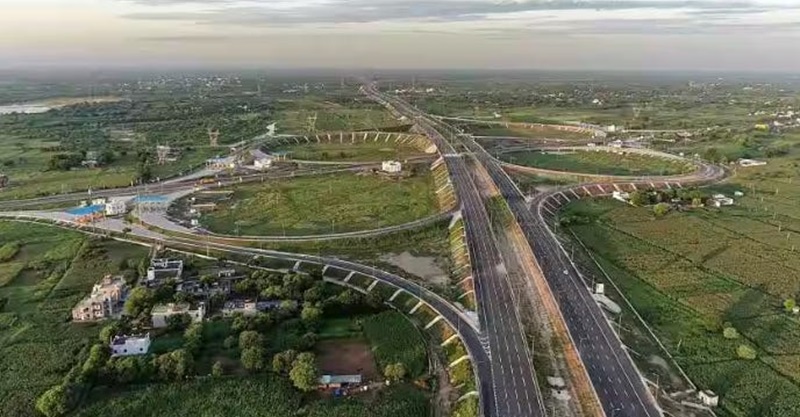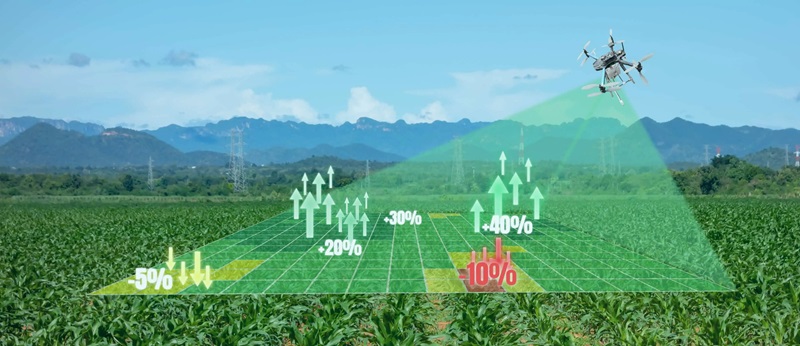Guiding the Future: A CEO's Strategic Approach to Transformative IoT Solutions in Traffic Management
1.jpg)
Paresh Shetty, CEO at Arya Omnitalk and Syntel Telecom
In a world that’s rapidly moving forward, digitalisation is the force providing it the fuel to change, transform, and accelerate constantly. What started as an abstract idea has become a force to be reckoned with that has reshaped the world in ways unimaginable. Digitalisation is now a grandiose ecosystem that has crossed ostentatious milestones. As cities globally head to a smarter future, the amalgamation of the cloud, AI, and IoT is holding the torch for a more innovative and connected tomorrow—and Arya Omnitalk and Syntel Telecom are pioneering the movement.
Smart Technologies for Smart Cities
The cloud is the medium, the central point, the crossroad that connects IoT, radio communications, unified communication, and security surveillance. When blended, they create a concoction so revolutionary, it elevates the future of businesses. Not only does the cloud resolve the hiccups of surmounting data traffic, but it also powers smart cities to handle physical traffic congestion using built-in IoT devices that send all vehicle data, from the location, speed, and toll booths, to the cloud, centralizing traffic management through real-time data collection.
67% of organizations have migrated to a public cloud, and 47% of companies are adopting cloud-oriented business strategies. The reason behind this migration is three-fold. Storing data infrastructure in the cloud boosts efficiency, improves cost-effectiveness, and is mindful of the increasing need for energy-efficient services; reports show that collecting data in the cloud can result in a 98% carbon emission reduction, proving more sustainable than traditional data collection and storage methods.
With the cloud creating a euphony of public, private, and co-location channels, the latent potential of data has crossed new horizons, transforming the world of telecommunication, traffic management, networking trends, and audio-visual sites.
As trends continue to shift, evolve, and frame enterprise goals, AI and data collection have given organizations the push, motivation, and opportunity to stay ahead of the curve.
Radio Communication
Spearheading the digital revolution, the Wave PTX software has changed the tides of telecommunication.
Telecommunication is the common link between people, people and organizations, and organizations and service providers; it is the backbone of a thriving ecosystem—radio communication digitalises this landscape with the help of ‘walkie-talkie’ solutions that use Public Mobile Radio Trunking (PMRT) to establish digital sites and explore beyond the limitations of traditional telecom policies.
Wave PTX metamorphoses telecommunication into radio communication, paving the path for a smart future using analogue signals to enable radio trunking through cellular technology. From conventional public MRT services that operated on manual setting up for cell channels to transmit and receive signals to public trunking technology (PTT) on cellular technology, radio communication allows simultaneous listening and management of one-on-one or multiple communication channels.
Radio communication has curbed license restrictions and delayed response to emergencies and disaster management—limitations that constrained the true potential of telecommunication—charting the course for a more efficient and functional future that opens doors for job delegation, prompt disaster management responses, and geo-tagging.
Pure Internet of Things
The Internet of Things, or IoT, is synonymous with digital acceleration. Report findings only solidify this statement, as, according to them, the number of global IoT networks has grown 18%, reaching a staggering 14.3 billion active endpoints. In an OpEx-based model governed by IoT devices, enterprises unlock a treasure trove of end-to-end solutions that not only redefine device management but also simplify the adoption of emerging technologies.
In an OpEx environment, in every IoT project, whether creating whiteboard designs or building customisable solutions, which users across diverse industries may adopt, a pure Internet of Things infrastructure makes technological solutions available and accessible on a Software as a Service (SaaS) basis.
Highway Toll Management Services
Time is of the essence; therefore, traffic management is time management. Cities are becoming smarter, but they allow themselves to get bested by traffic congestion due to the increasing number of vehicles on the roads. Highway Toll Management Services incorporates one of the sharpest technologies in the digital shed to implement an effective traffic management system by streamlining toll booths: IoT.
When paired with FASTag, IoT steers the wheel of a smart traffic control system. It enables the tag to leverage Radio-frequency Identification (RFID) technology attached to the vehicle’s windscreen, which, when scanned, links to the associated prepaid account, automatically deducting the toll amount forgoing long queues. Furthermore, the FASTag method also reads the number plates using the Automatic Number Plate Recognition (ANPR) technology. In addition to assisting with video security surveillance, this application automates parking management, as every vehicle in the parking space is accounted for by its plate number.
The Road Ahead: Connected, Safer, and Unified
The advent of cloud migration and IoT equipment has forged a new path for solutions that take smart cities to the next level. It has opened new avenues that accommodate, enable, and promote seamless connectivity, better road safety, and effective decision-making based on real-time insights and data. Harnessing the individual and combined prowess of radio communication, an IoT-driven infrastructure, and Highway Toll Management Services enhances public safety, allows swift emergency and disaster responses, and enables remote surveillance.
A brief Discussion with Paresh Shetty
In the digital and business realm, Mr. Paresh Shetty stands out as a transformative force in B2B sales. As the CEO of AryaOmnitalk and Syntel Telecom, he brings over 25 years of expertise, leaving an indelible mark on the cloud, data centers, and IT infrastructure sectors..Beyond his professional pursuits, Mr. Shetty is dedicated to coaching startups and entrepreneurs.
In conversation with Mr. Paresh Shetty,we delve into the strategic decisions, challenges faced, and transformative experiences that have shaped his remarkable journey in sales, leadership, and diverse tech sectors like hardware, cloud, and data centers. This insightful discussion provides professionals with valuable perspectives on digital evolution, spanning from the early days of hardware to the current convergence of AI and IoT, offering guidance for navigating the dynamic landscape of IT and digital transformation.
Q. In your journey from engineering to technology to sales, how did your academic experiences shape your professional trajectory?
Growing up, my interests initially leaned towards becoming a doctor or serving in the Air Force or Navy. However, enrolling in a prestigious engineering college changed my path. Recognizing my management and people skills, my principal guided me towards a career in sales. Over the next 25 years, my passion for helping and managing people led me through various roles, from Hewlett-Packard to telecom and IT sectors, ultimately shaping me into a holistic leader.
Q. Can you share the challenges and catalysts you've faced while scaling businesses across hardware, cloud, data centers, and telecom, guiding your journey from hardware to the cloud, AI, and IoT?
The market trend is shifting towards cloud adoption due to its efficiency,cost-effectiveness and sustainable characteristics. Approximately 35% of Indian enterprises operate off-premise,and 65% of enterprises across BFS, pharmaceuticals, and manufacturing sectors remain on-premise to keep data within reach, resulting in substantial room for growth for cloud services and emphasizing the potential for more data centers in India in the coming years .Hence forth, Market maturity will lead to more data creation driven by digitalization and IoT, contributing to AI adoption. This positive transformation in the IT and telecom sectors opens exciting avenues for continuous innovation and collaboration with IoT- and AI-service providers.
Q. How do you envision IoT sensors addressing traffic congestion in cities like Bengaluru, and what role does technology play in this scenario?
Integrating IoT sensors into vehicles is a game-changer for tackling traffic congestion. Real-time data available on cloud platforms enables central traffic management, providing insights into vehicle locations and traffic conditions. Applications utilizing this data benefit both individual travelers and traffic controllers, facilitating smart navigation and decision-making. IoT sensors and public radio trunking technologies on cellular networks will take traffic management to the next level.
Q. How does POC (Push-to-Talk over Cellular) technology disrupt the radio communication industry, according to your perspective?
From my perspective, Push-to-Talk over Cellular (POC) technology is reshaping the radio communication industry by converting mobile phones into walkie-talkies. This advancement elevates radio communication by enabling instantaneous communication, real-time tracking, and integration of intelligent features like geofencing and emergency responses. As a result, POC technology obviates the need for dedicated infrastructure, disrupting the traditional radio trunking system. This approach, grounded in an Operational Expenditure (OpEx) model, ensures a straightforward adoption process for businesses seeking to embrace IoT for automation and digital transformation. In the highway toll management sector, there is an ongoing evolution exploring technologies such as GPS tolling to facilitate seamless transactions, although challenges in payment collection still require resolution.
Q. How do you see technologies like radio communication, IoT, and highway toll management accelerating digital transformation towards smarter cities, intelligent traffic management, and advancements in security surveillance and unified communication?
POC technology in radio communication empowers flexible communication, with a significant impact on pivotal sectors such as security and emergency response. Meanwhile, the IoT landscape experiences a burgeoning demand for comprehensive solutions, particularly in the realms of smart cities, vehicle tracking, and sewage management. The evolution of highway toll management is marked by the exploration of GPS tolling, ensuring transactions unfold seamlessly. Moreover, our dedicated focus on security surveillance, unified communication, and state-of-the-art audio-visual solutions uniquely positions us to meet evolving needs and shape the future business landscape in India and beyond.
Q. In today’s competitive landscape, young entrepreneurs seek guidance from experienced professionals. How do you mentor and guide young minds and startups?
Mentoring emerging startups is a passion I pursue pro bono, driven by a deep belief in the entrepreneurial spirit. Many founders, adept in technology, grapple with sales challenges, hindering their growth and sustainability. My focus lies in guiding them through the intricacies of sales, business projections, and financial planning . I encourage a concentrated effort on go-to-market strategies, sales, and resource management. As the startup landscape evolves, I envision contributing further to nurture courage and learning in the entrepreneurial realm, recognizing the inherent challenges and triumphs in building one's venture.
Q. Being a visionary Leader in the industry,you are also a sports aficionado. How do you connect the sports principles of commitment, fearlessness, and resilience to the professional world, and how has your passion for sports shaped your business model and approach?
My profound passion for sports has profoundly influenced my professional journey, shaping my philosophy and approach. A crucial lesson from sports is gracefully accepting defeat, translating to a resilient mindset in the business world where acknowledging both victories and setbacks is vital. The highs of success are exhilarating, but the lows teach invaluable lessons in resilience and preparation for future triumphs.
Collaboration, another vital lesson from sports, is crucial in the professional realm. Team sports instill the ability to work harmoniously with diverse team members, a skill transferable to various business scenarios where teamwork is fundamental. I firmly advocate for every child's engagement in individual and team sports, fostering resilience and effective collaboration.








